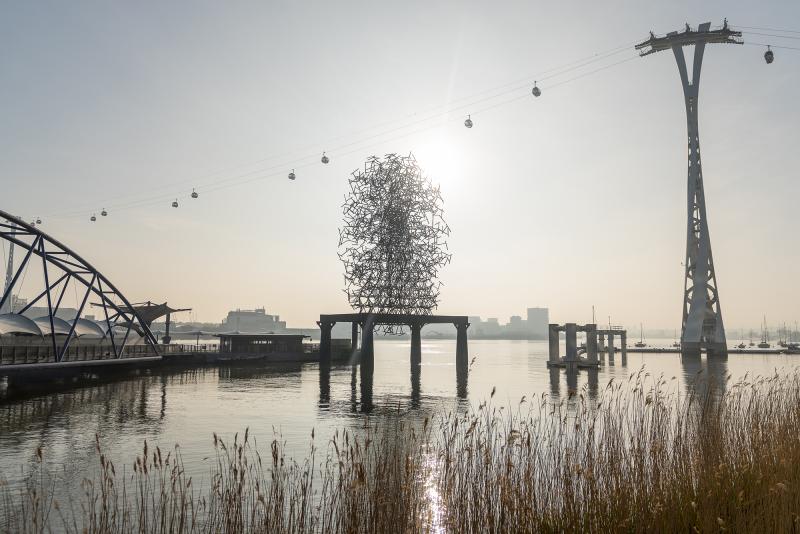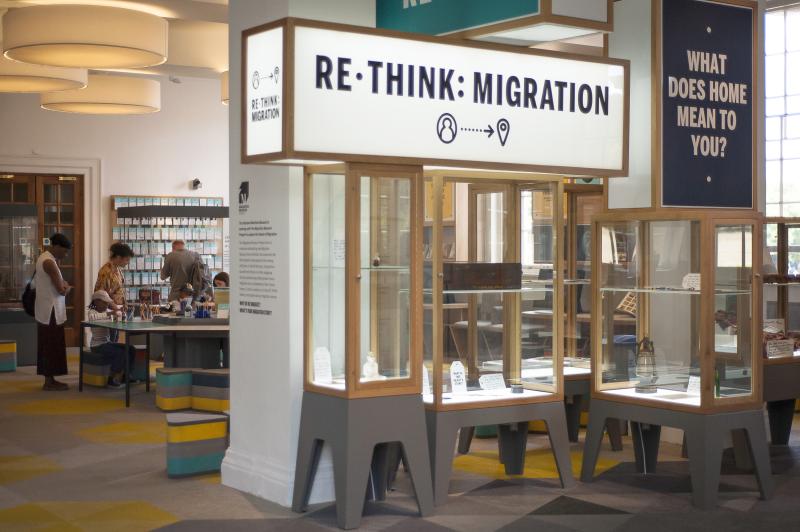
Essential Information
| Location |
Queen's House
|
|---|---|
| Price | Free |
For more than 400 years, the Queen’s House has been a home for artistic innovation.
The House was designed as a space to showcase the leading artists of the age, from works by Van Dyck to ceilings once painted by Orazio Gentileschi and his daughter Artemisia.
Today the Queen's House continues this tradition, commissioning and displaying pieces from leading artists including Alberta Whittle, Richard Wright and Kehinde Wiley.
Discover the highlights of the contemporary art collection, and make sure to look out for them during your visit.
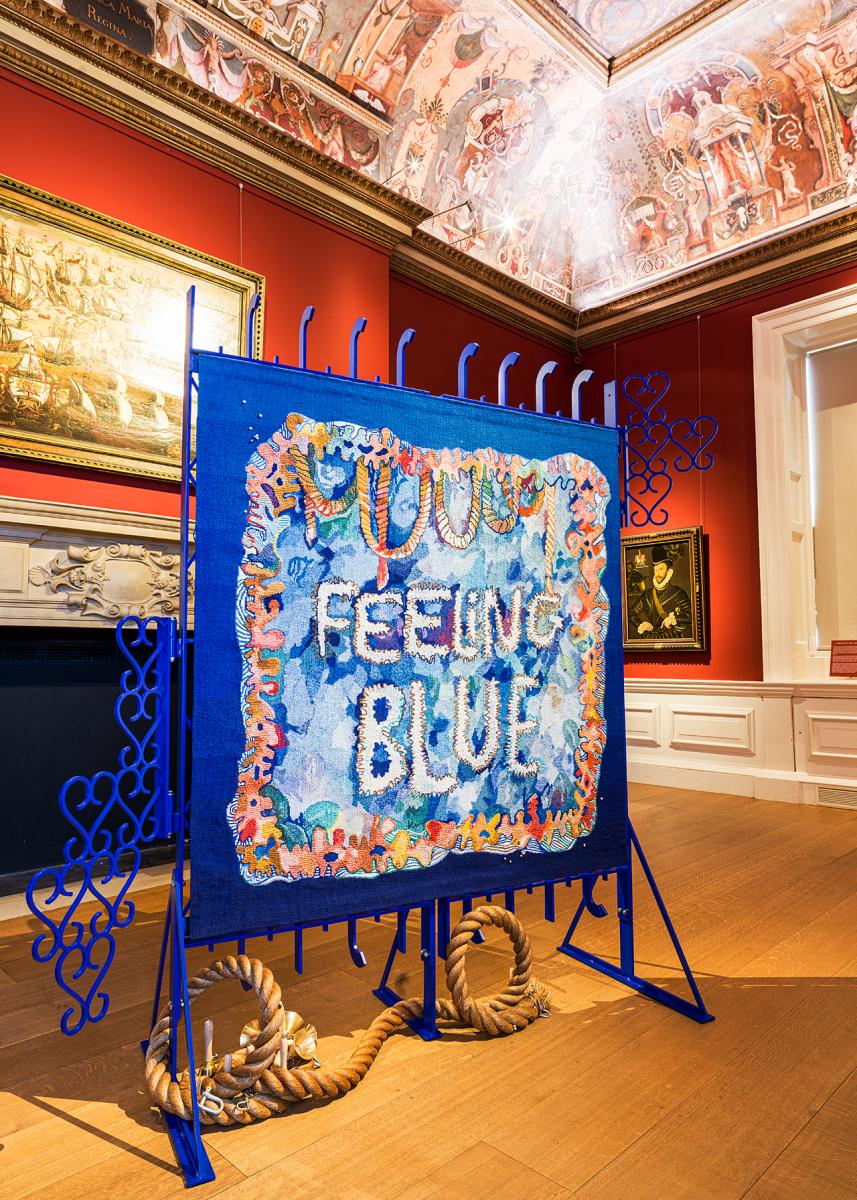
Feeling Blue by Alberta Whittle and Dovecot Studios
Featuring more than 150 different colour combinations, this vibrant tapestry takes inspiration from the varied collections and complex histories of Greenwich.
Feeling Blue is a brand-new commission from Royal Museums Greenwich. It was created by multidisciplinary artist Alberta Whittle and Dovecot Studios in Edinburgh.
The tapestry is on display in the Queen’s Presence Chamber and responds to specific artworks within the space. Cultured freshwater pearl beads are woven into its design, referencing the jewelled gown depicted in the Armada Portrait of Elizabeth I.
Its blue colour scheme also provides a nod to the interior of the Queen’s House itself, as seen in the ceiling of the King’s Presence Chamber and the balustrade of the Tulip Stairs.
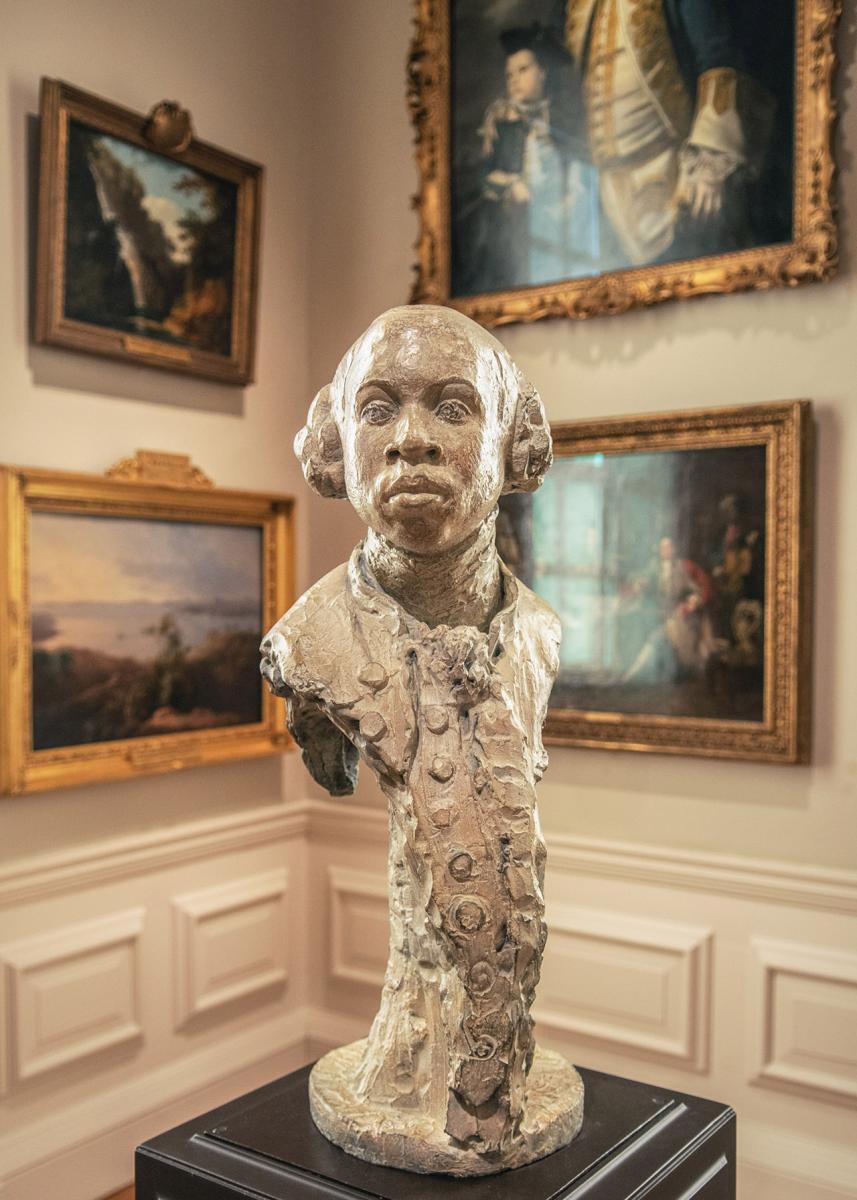
Olaudah Equiano – African, slave, author, abolitionist by Christy Symington
A leading voice in the abolitionist campaign, Olaudah Equiano was sold into slavery around the age of 11. He eventually bought his freedom and documented his experiences in his autobiography The Interesting Narrative of the Life of Olaudah Equiano, published in 1789.
This sculpture was made by artist Christy Symington, and is on display on the first floor of the House. The sculpture stands in dialogue with 18th century naval portraits, inviting viewers to consider what makes a hero – and who is recorded by history.
Sculpture of Olaudah Equiano © Christy Symington MRSS/DACS 2018 (Photo: © National Maritime Museum, Greenwich, London)
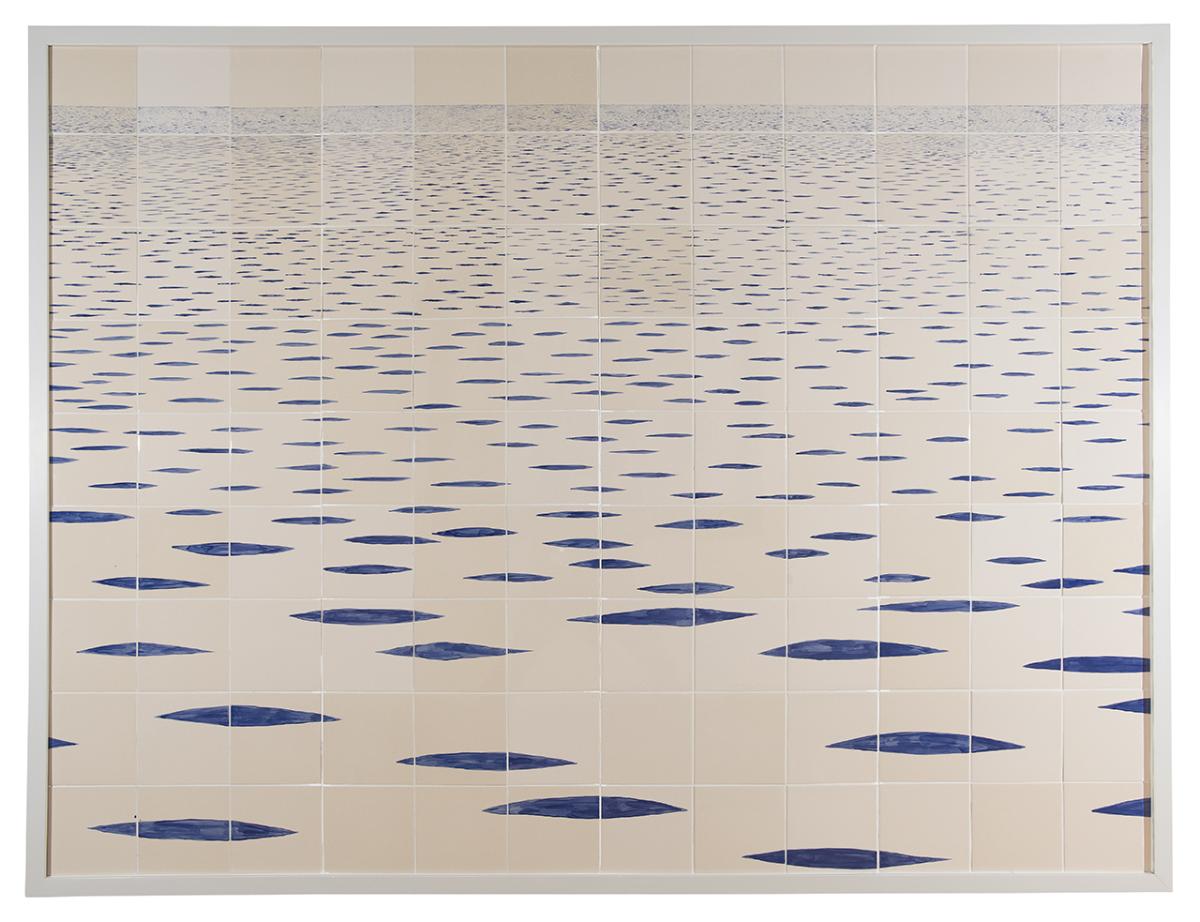
Sea Mark by Tania Kovats
This meditative work captures the rippling surface of the sea. It is a piece that evokes the senses: you can almost smell the spray of the sea and hear the crashing waves.
Sea Mark was created by visual artist, Tania Kovats, who uses media including sculpture, installation and drawing to explore our relationship with the landscape. Kovats’ piece draws on a tradition of hand-painted blue and white ceramic tilework, an 18th century example of which hangs beside it, located near the Loggia.
Kovats hand-painted ceramic tiles using glossy, liquid brushstrokes to emphasise the fluidity of the waves. The tiles were then carefully fired and glazed.
© National Maritime Museum, Greenwich, London. Courtesy of the artist and Pippy Houldsworth Gallery, London
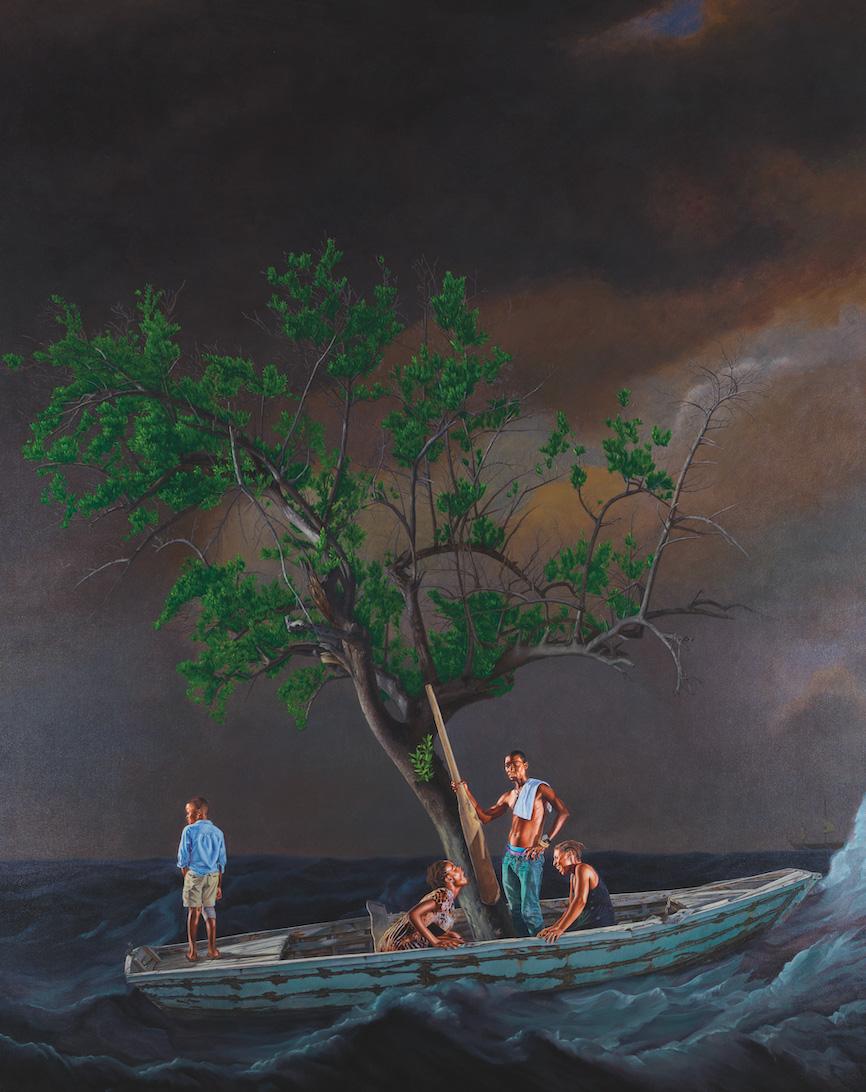
Ship of Fools by Kehinde Wiley
The painting is created by visual artist, Kehinde Wiley, whose work reimagines Western artistic traditions to place marginalised figures centre stage.
Ship of Fools showcases Wiley’s pioneering approach, reworking the conventions of seascape painting to explore issues including refugee crossings, identity and the legacies of the transatlantic slave trade.
“Ship of Fools is a response to the history of maritime painting, and in a very strong way is about trying to come to terms with the project I have had over the past 10 to 12 years, which is to delve into the history of painting – Gainsborough, Turner, Bosch. To delve into those people whose shoulders I try to stand on. To justifiably create a space for myself,” explains Wiley.
The work is currently on display in the Governor’s Parlour.
Purchased with the assistance of The Art Fund, the American Friends of Royal Museums Greenwich and the Keith McBride bequest.

Asabikeshiinh Aeris (Bronze Dreamcatcher) by Rowan Mersh
Fusing traditional craft and new technologies, this bronze sculpture of a turritella seashell was created by Rowan Mersh, a multi-media artist known for his large-scale wall pieces and freestanding sculptures.
Asabikeshiinh Aeris provides a modern twist on the artistic legacy of shell craft work, many examples of which are in Royal Museums Greenwich’s collection. It is on display in the King's Writing Closet, part of a 'cabinet of curiosities' including navigational instruments, ceramic figurines and natural wonders.

Untitled (Admiral in State) by Faisal Abdu’Allah
Black cultural identity, erasure and agency are just some of the themes emphasised in this work by portrait photographer, Faisal Abdu’Allah. Untitled (Admiral in State) was created following extensive research into Royal Museums Greenwich’s collections. It is a contemporary response to the Museum’s naval artworks, using Abdu’Allah’s friend as the sitter. While symbolising the fragility of humanity, the work explores issues including the marginalised Black subject.
Untitled also takes inspiration from the history of the Queen’s House. During the 17th century, the Great Hall was used for the laying-in-state of two Parliamentary Generals at Sea.
This work is currently on display in the Queen’s Ante Chamber. To create this piece, Abdu’Allah screen printed a photograph onto a copper sheet – a technique he developed himself.
Courtesy Faisal Abdu'Allah / National Maritime Museum, Greenwich, London
The Great Hall ceiling by Richard Wright
Look up at the ceiling of the Great Hall to spot this golden installation. To mark the 400th anniversary of the Queen’s House in 2016, Turner Prize-winning artist Richard Wright was invited to create an artwork for the space.
His delicate gold leaf design – one of the largest pieces Wright has ever attempted – was inspired by the floral motifs seen in the balustrade of the Tulip Stairs.
The artwork was painted on the ceiling using 17th century fresco techniques – a painstaking process for Wright and his team of five artisans.
Wright’s installation is part of the history of Great Hall ceiling designs. During the 17th century, the Hall’s ceiling was adorned with a set of painted canvases, commissioned from and largely painted by artist Orazio Gentileschi, and likely his daughter Artemisia.
These were later removed during the reign of Queen Anne, who gave them to her favourite, Sarah Churchill.
